Short-Stature Corn
Standing out by being shorter: All about short-stature corn
Stine® Seed Company has long been a major player in the seed industry, and the company has also been a pioneer in developing short-stature corn. Stine’s research on this revolutionary step in corn breeding began in the 1990s, focusing on planting populations and row widths. This groundwork proved crucial in understanding how corn responds to high-population environments. Interestingly, Stine’s initial focus wasn’t on producing shorter corn but developing higher-yielding genetics capable of thriving in more dense populations to, ultimately, produce more yield per acre. Through trial and error, Stine’s breeding program eventually found that the highest-yielding genetics produced shorter and more efficient plants. This early research paid off, leading Stine to develop short-stature corn hybrids well before its competitors.
More than 80 years of historical data shows a clear correlation between increased plant populations and better yields. Stine uses this correlation to help growers reach their corn acres’ full potential. In fact, about one-third of Stine’s corn product lineup now features shorter-stature hybrids, and the company predicts a similar forecast for the coming years. Any hybrid shorter than 90 inches is considered shorter-stature corn, according to Myron Stine, company president.
Stine’s research shows part of the equation of pushing corn genetics to yield more means packing more plants into each acre. While 38,000 to 42,000 is the common range for plants per acre today, Stine predicts those numbers to climb to the mid- to upper 40s for finished populations. That means smaller, shorter plants that produce less biomass aboveground.
This article explores exactly what short-stature corn is, the research behind it and what experts are saying about its performance in higher populations.
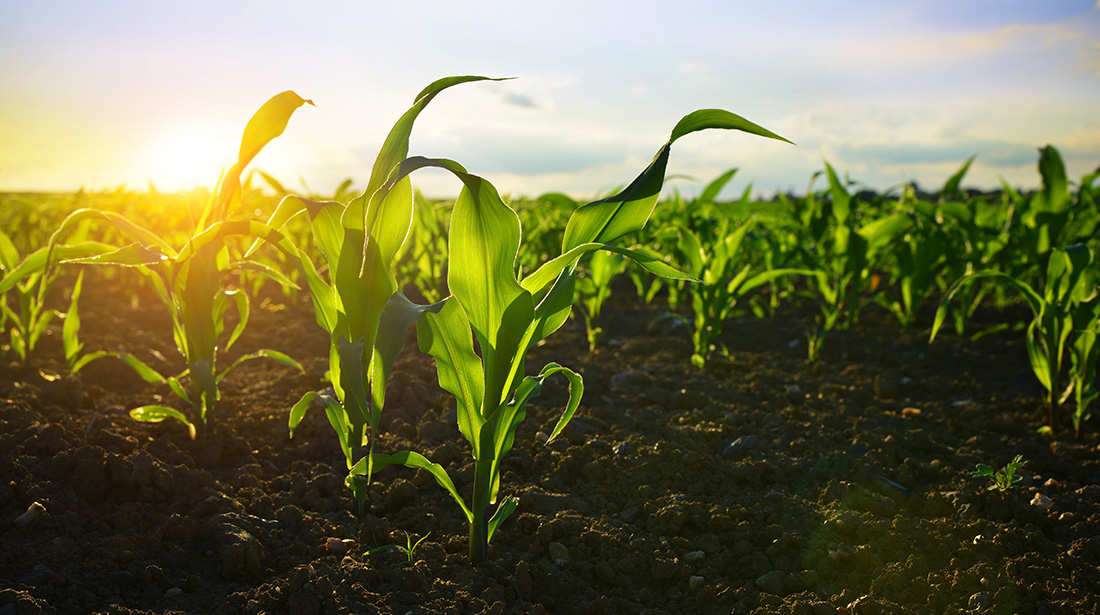
What Is Short-Stature Corn?
Imagine corn standing roughly two feet shorter than its traditional counterpart, with smaller tassels but similar ear sizes. This corn has a shorter distance between the tassels and ears for more efficient pollination and lower ear height on thicker stalks for improved standability and harvestability. This is the essence of short-stature corn.
Specific attributes of short corn include (but are not limited to):
- A target height of seven feet or less compared to 9–12 feet for regular corn.
- Ear height that is two feet (or slightly more) above the ground.
- Ear size that is similar to current corn hybrids.
- Plants that are more stable, allowing farmers to plant them more densely.
From the beginning, Stine’s work on short-stature corn was never for the sake of producing shorter plants. Rather, it was to achieve specific benefits by following the science. While many industry competitors have recently begun to recognize this trend, for years Stine has been leaning into the truth of the genetics: Shorter is where the plant really wants to be. In 1996, the average height of Stine’s hybrids was roughly 105 to 110 inches. Today, they are trending around 90 inches for 105- to 115-day relative maturity hybrids. In fact, even Stine’s tallest hybrids are still shorter than most of its competitors’.
Interestingly, it was a cost-cutting measure in the company’s early days that led to the development of Stine short corn. Because Stine had little room in its budget for research and development back then, its breeding trials had to be somewhat simplified. For example, rather than thinning out plots to give plants room to grow, Stine opted to let all the plants remain. Only the ones that performed the best were selected for further development. The result? An evolution of hybrids that continually became shorter in stature — about one-third shorter than conventional corn today. That’s because the plant’s goal is to pollinate the ear, so the higher-yielding hybrids “want” to be closer to the tassels, explains Myron Stine.
“The plant naturally wants to move the ear closer to the tassel — it just makes sense. So that’s what we started getting. It took years to get here, but it’s ideal now.”
Myron Stine, Stine Seed Company president
Additionally, through genetic modification, Stine’s corn breeders were able to adjust growth hormones to create shorter internodes (the segments between leaves on the stalk). This not only results in a stockier plant, but it also allows it to do a better job of harvesting sunlight. With its leaves angled upward more than traditional corn, more light can reach the lower leaves. This means more Stine short corn can be grown per acre, potentially increasing overall yield. And, with a lower center of gravity, Stine short corn stands strong, leading to bigger harvests for farmers.
Short-stature corn is a dramatic and promising change in plant architecture that Stine has been working toward for more than three decades. This innovation in breeding traits is revolutionizing how we grow corn — the most produced crop in the world.
What Are the Benefits of Short-Statured Corn?
As with any innovation in agriculture, there are pros and cons to short-stature corn. However, Stine’s research over the past 30 years has revealed far more benefits than drawbacks overall for farmers.
Here are some important benefits of short-statured corn:
- Reduced planting distances. Short-stature corn, with its more upright leaves and sturdier stalks, can be planted closer together without sacrificing yield. This is a game changer for farmers with limited land or those seeking to maximize production on existing fields.
- Smaller tassels. Short corn varieties have smaller tassels that cast less shade on lower leaves, allowing for better light capture and increased grain production.
- Lower risk of lodging. With a lower center of gravity and thicker stalks, short-stature corn is less likely to fall over during high winds or yield-damaging storms.
- Ideal spacing for pollination. The distance between the tassel and uppermost ear on short corn varieties is reduced, which improves pollination.
- Higher-density planting. This increases the number of ears per acre resulting from higher plant populations.
- Narrower row spacing. The amount of space a corn plant has on all four sides is more consistent in Stine short corn.
- In-season access. Farmers are able to apply fertilizer or fungicide to short corn varieties with tractors and sprayers rather than planes. This minimizes environmental impacts from drift. It also gives farmers better access to the corn throughout the season.
- Better erosion control. Rain is less likely to get through narrower rows and denser canopies. Coupled with equidistant plant spacing, less water channeling can be expected. This can potentially reduce erosion.
- More developed root systems. Because Stine short corn needs fewer resources in its stalk, it can send more to its roots. This helps plants better tolerate drought and draw fertilizer from the ground, allowing for a bigger (and stronger) root mass that equates to improved standability and more efficient nutrient uptake.
Along with the benefits of short-statured corn, Stine also has addressed concerns some growers have expressed regarding this innovative approach. Here are some of their main questions and feedback:
- Ear placement. Some growers worry that combine headers can’t get low enough to harvest short corn hybrids, noting that if the ear has less than 24 inches of clearance, there will be harvestability issues. However, short corn varieties have a target ear height of two feet (or slightly more) above the soil, which is compatible with most of today’s standard harvest equipment. Additionally, some farmers and ag researchers have identified simple adjustments to the stripper plates and gathering chain settings to ensure corn ears are pulled in (but not the stalks). Most report having no difficulty harvesting short-stature corn.
- Input management. Another concern is that higher plant populations will require more meticulous input management in the field. However, Stine short corn allows farmers to make late-season agronomic decisions — such as applying fertilizer later in the season when kernels are getting bigger and plants need it most. In fact, field trials show short corn performs better when nitrogen is applied later in the season, so making better use of it is one of the most significant benefits of short-statured corn.
- Cost of seed. Since planting at higher populations requires more seed, some growers are skeptical that the push toward shorter hybrids is simply to drive up unit sales. Stine responded to this claim early on with a program where farmers could get a recommended hybrid and planting population “prescription.” If the recommended prescription required more corn seed than the grower would normally purchase, Stine would cover the additional amount. This was to get farmers to see for themselves how well these short corn varieties Today, Stine offers a “per acre” seed cost to progressive growers. As they increase their population, the average seed cost per acre declines.
- Narrower row widths. Thirty-inch rows are such a basic cultural practice in farming that the idea of moving to narrower row spacings can be a nonstarter for some growers. Stine previously worked with John Deere and Great Plains to build special narrow-row planters that were then leased to corn customers on a lease-to-buy basis. Stine put 100 of these planters into use to help growers adopt short corn genetics. Now, growers can easily plant in narrower, 15-inch rows with their regular planters and still have similar results.
- Farmers like to test new products in their own fields, usually to compare them to what they’re already used to growing. But this can lead to inaccurate performance evaluations. One huge factor is the shading effect. This happens when farmers plant alternating rows of short and tall corn so they can easily observe them. However, because the taller plant will cast shade on the shorter hybrid, it simply won’t perform as well — giving growers incorrect information on short corn performance and potential yield. Stine strongly encourages farmers to keep plenty of distance between traditional corn and short-stature corn hybrids.
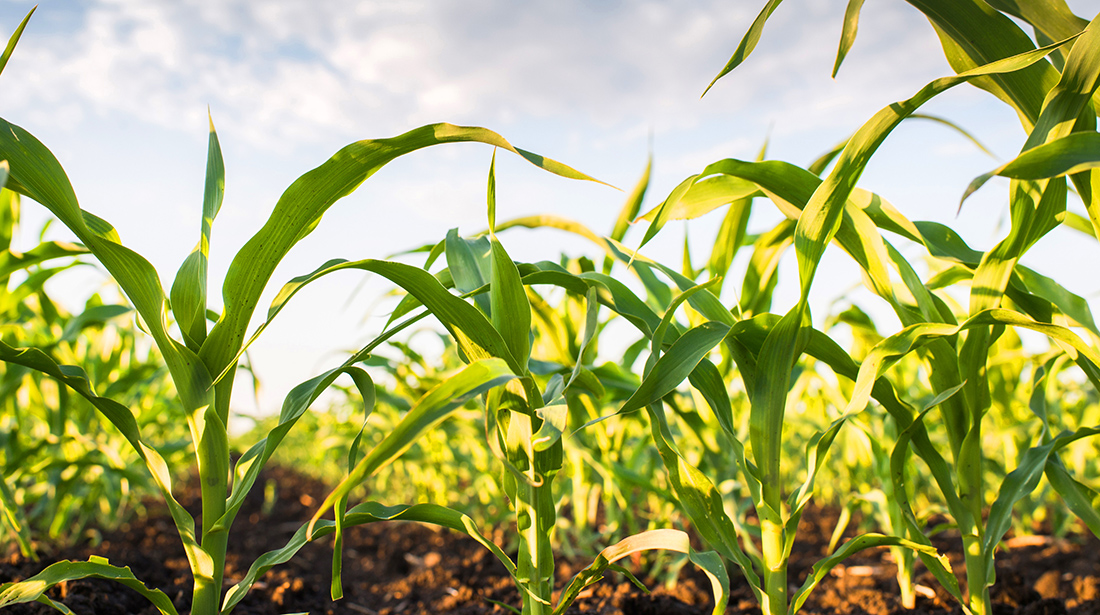
How Tall Is Short-Stature Corn?
Short-stature corn is gaining traction for its potential benefits. But how tall is this "short" corn, and how does it differ from its even tinier cousin, dwarf corn?
Short corn varieties are bred to be significantly shorter than their classic counterparts. While traditional field corn can reach heights exceeding 10 feet, short-stature corn stands roughly 20–24 inches shorter. This translates to a height of around 6–8 feet — a noticeable difference that impacts both aesthetics and functionality.
This reduction in height is achieved through targeted breeding techniques. Breeders adapt growth hormones to create shorter internodes, which are the segments between leaves. This can be done through traditional breeding practices or by using genetic modification. It's important to distinguish short-stature corn from dwarf corn. Dwarf corn, often used in ornamental settings, is considerably shorter, sometimes reaching only 3–4 feet in height. This makes it ideal for deer and waterfowl when planted near ponds or water sources.
While both offer advantages in terms of space efficiency, short-stature corn is specifically designed for agricultural production. It maintains a height that allows for efficient harvesting with standard equipment, unlike dwarf corn, which may require specialized harvesting methods.
As discussed earlier in this article, there are several benefits of short-stature corn for farmers. The lower center of gravity makes these plants less susceptible to lodging (falling over) in strong winds or heavy rain. This translates to a reduced risk of yield loss and potentially bigger harvests. Additionally, the ability to plant them closer together without sacrificing yield allows for increased productivity on existing land.
Does Short Corn Affect Yield?
So far, we’ve defined what is short-statue corn, explored the benefits of short-statured corn and discussed how Stine has been leading the industry in this revolutionary approach to corn production. A big question remains, however, and that is: Does short corn affect yield? Let's delve into more details of short corn plants and see how their compact build affects their ability to produce yield.
Traditionally, taller corn has been considered ideal for maximizing yield. The taller the plant, the more leaves it can unfurl, capturing precious sunlight for photosynthesis, a vital process for grain production. However, short stalk corn varieties challenge this notion — which is one reason why roughly a third of the hybrids Stine sells are considered to be short-statured corn hybrids. Stine has been selling these hybrids commercially for more than a decade.
Company president Myron Stine says the short-stature hybrids offer a potential 10% yield boost at higher plant populations.
“Just because it is a short stature hybrid doesn’t mean it has to be planted at higher populations. But our hybrids tend to like higher populations — 42,000 plants per acre (on productive soils) is not out of the question.”
Myron Stine, Stine Seed Company president
Furthermore, certain short corn varieties boast more upright leaves compared to their taller counterparts. This allows for denser planting without compromising light capture. By placing short corn plants closer together, farmers can fit more productive plants onto a single plot of land. This translates to the potential for increased yield per acre, even with the shorter stalks.
Stine’s research shows that more equidistant spacing raises yields an average 3% to 9%. When matched with the right environment, the right high-population hybrid can gain growers an additional 5% to 12% in yields. Even more, if proper management practices are followed, including timely applications of nitrogen, yields can grow even higher — upwards of another 10–20%.
It's important to acknowledge that short corn varieties are still a relatively new development. Long-term studies are needed to fully understand the impact of their shorter stature on factors like disease resistance and adaptation to different soil types. However, independent research conducted on the performance of short corn has had promising results. A study by Purdue University’s College of Agriculture showed short-stature hybrids maintained the same yields as full-stature hybrids when grown in the same environments.
These hybrids also exhibited a higher tolerance to both increased seeding rates and 20-inch, narrow-row systems. Researchers saw continued yield increases as seeding rates increased from 34,000 to 50,000 seeds per acre when grown in 20-inch rows. In highly productive ground, like in central Iowa, Stine recommends populations of 43,000 to 45,000 population/acre for many of its high-population hybrids. That's higher than populations of conventional hybrids, which often range in the mid-30,000s.
Short corn plants, with their resistance to lodging and potential for denser planting, offer exciting possibilities for increasing yield. As short corn varieties continue to be developed and refined, we might see a future where shorter stalks consistently translate to bigger results in the world of corn production.
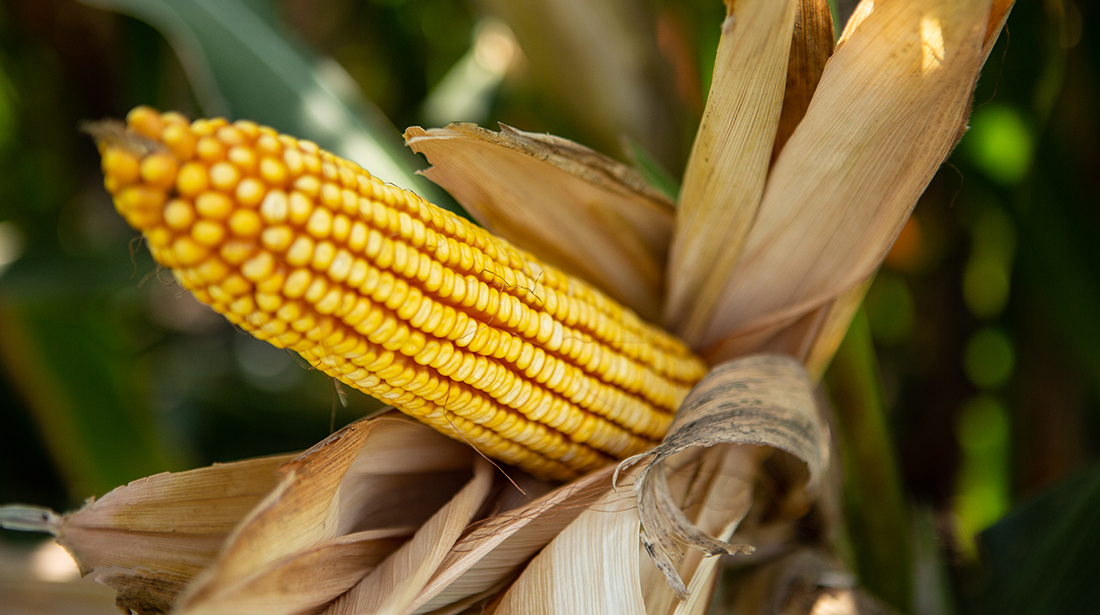
What Is Short Corn Used For?
Short-stature corn hybrids, an innovation in corn breeding that began with Stine, are gaining ground for their potential benefits. But what exactly is short-stature corn used for?
Unlike its towering relatives, short-stature corn hybrids are specifically bred to be 20–24 inches shorter. This is achieved through targeted breeding or genetic modification, adapting growth hormones to create shorter internodes. The resulting plant boasts a stockier build and a lower center of gravity, making it better suited to withstand severe weather events.
The primary purpose of short-stature corn hybrids lies in grain production. These compact plants offer several advantages over traditional tall corn varieties. One major benefit is their enhanced standability. According to Purdue University Cooperative Extension Service, stalk lodging leads to annual yield losses between 5 and 25% in the U.S., posing a significant concern for farmers. Short-stature corn minimizes the associated yield losses due to lodging.
Another key use of short-stature corn is to get the most yield from existing fields. Traditional corn requires ample space for leaves to capture sunlight for photosynthesis. However, the more upright leaves of short-stature corn hybrids allow for denser planting without sacrificing yield. This translates to maximizing productivity, particularly beneficial for farmers with limited available land.
The potential uses of short-stature corn go beyond grain production. Their compact size makes them ideal cover crops. Planted after a main crop is harvested, cover crops help suppress weeds, prevent soil erosion and improve soil fertility.
The future potential for short-stature corn is undeniable. From increased grain yield and efficient land use to improved standability and potential applications in cover cropping, these shorter versions of a familiar crop hold promise for a more productive and sustainable future in agriculture.
Recap: Is Short Corn a Smart Corn?
The concept of "smart corn" might conjure up images of genetically modified super plants, but the truth behind short-stature corn is a bit more down to earth, though no less intelligent. So, is short corn truly a smarter choice for farmers?
The answer lies in the benefits short corn stalks offer. While "smart" may be a relative term, short corn is certainly a wise innovation for farmers. Stine has been evaluating corn plant heights since the 1990s. Coupled with Harry Stine’s research of planting populations and row widths, Stine developed shorter, more efficient corn plants long before anyone else.
“The reality is, we don’t really care if the corn is short or tall, but we have found as we push genetics to their highest potential, and as we yield-screen brand-new genetics every year, the high-yielding, high-performing ones tend to be shorter than most of the genetics available out there.”
Myron Stine, Stine Seed Company president
In the ever-evolving world of agriculture, short-stature corn might just be a sign of big things to come. It certainly represents a significant leap forward in corn breeding, and Stine has been at the forefront for decades. The company’s dedication to research and development has resulted in a product that offers improved standability, potential yield increases and efficient land use. As short corn hybrids continue to gain traction, there’s no question that Stine not only invented this product — they perfected it.
Learn more about Stine short corn and other hybrids at StineSeed.com/corn/.
Learn more about Stine® Short-Stature Corn
Related Articles
-
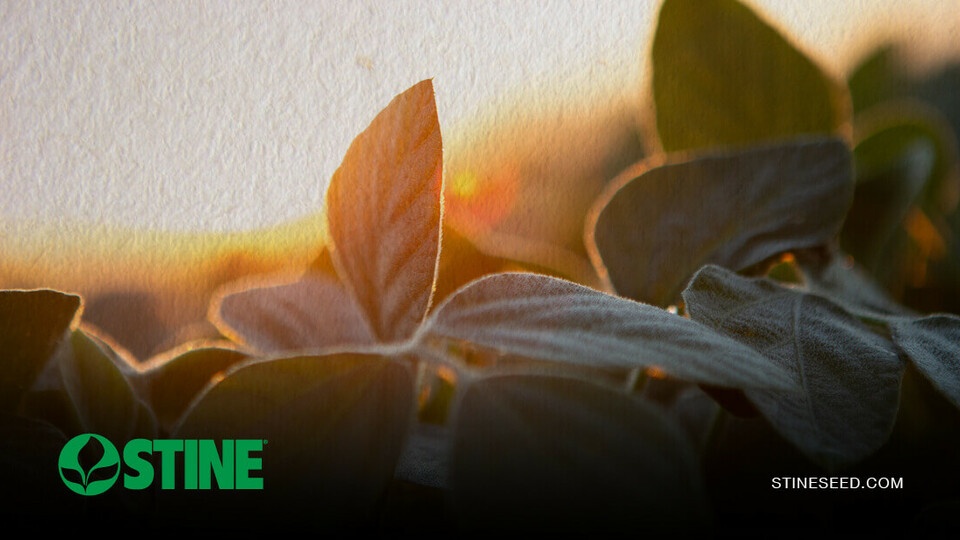
Exclusive soybean offerings, only from Stine®
September 2024 in Agronomy
-
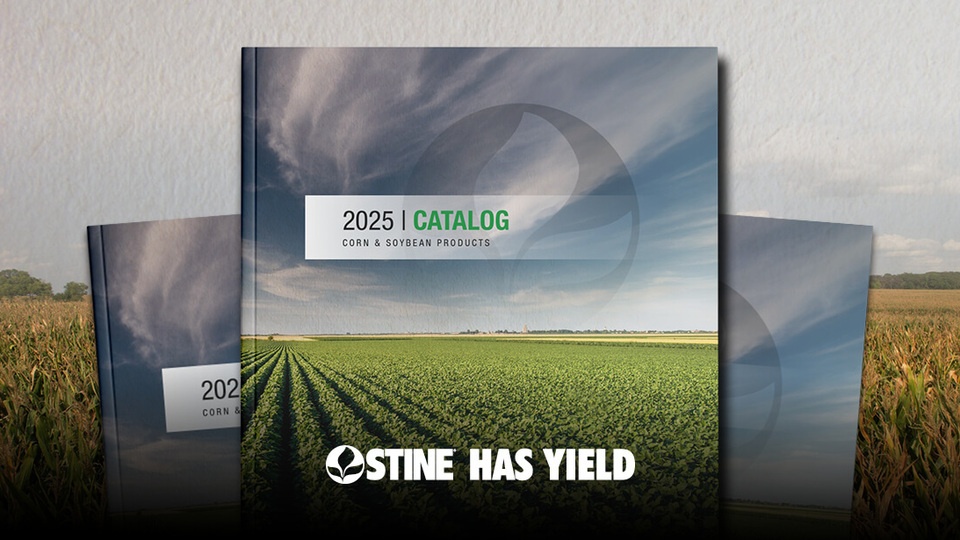
2025 Stine® Seed Catalog: Products by farmers, for farmers
September 2024 in Agronomy
-
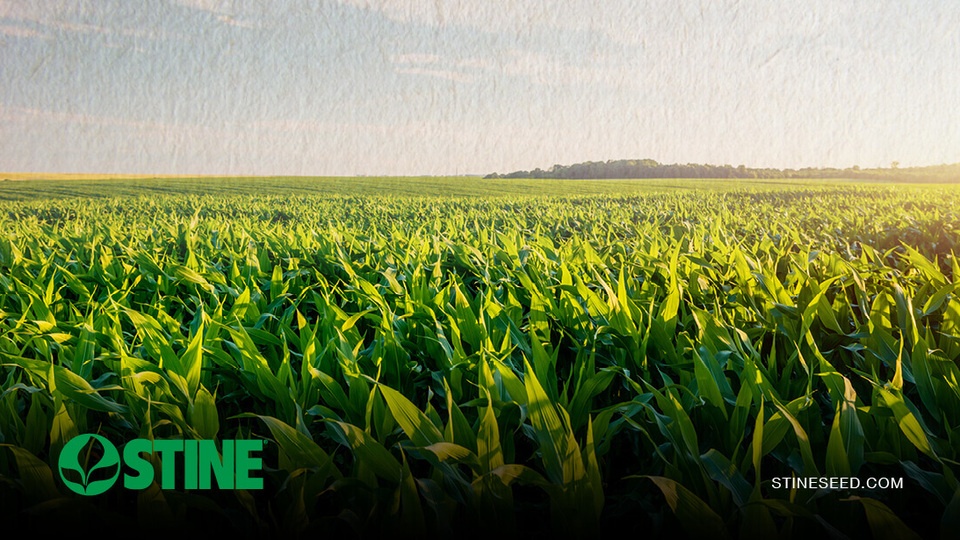
Top corn offerings for 2025
August 2024 in Agronomy
-
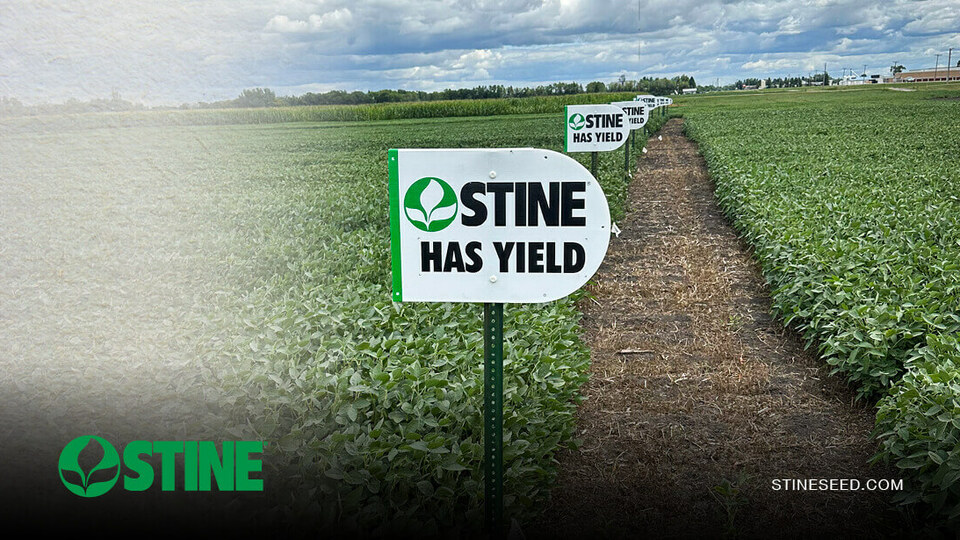
Crop progress update
August 2024 in Agronomy
